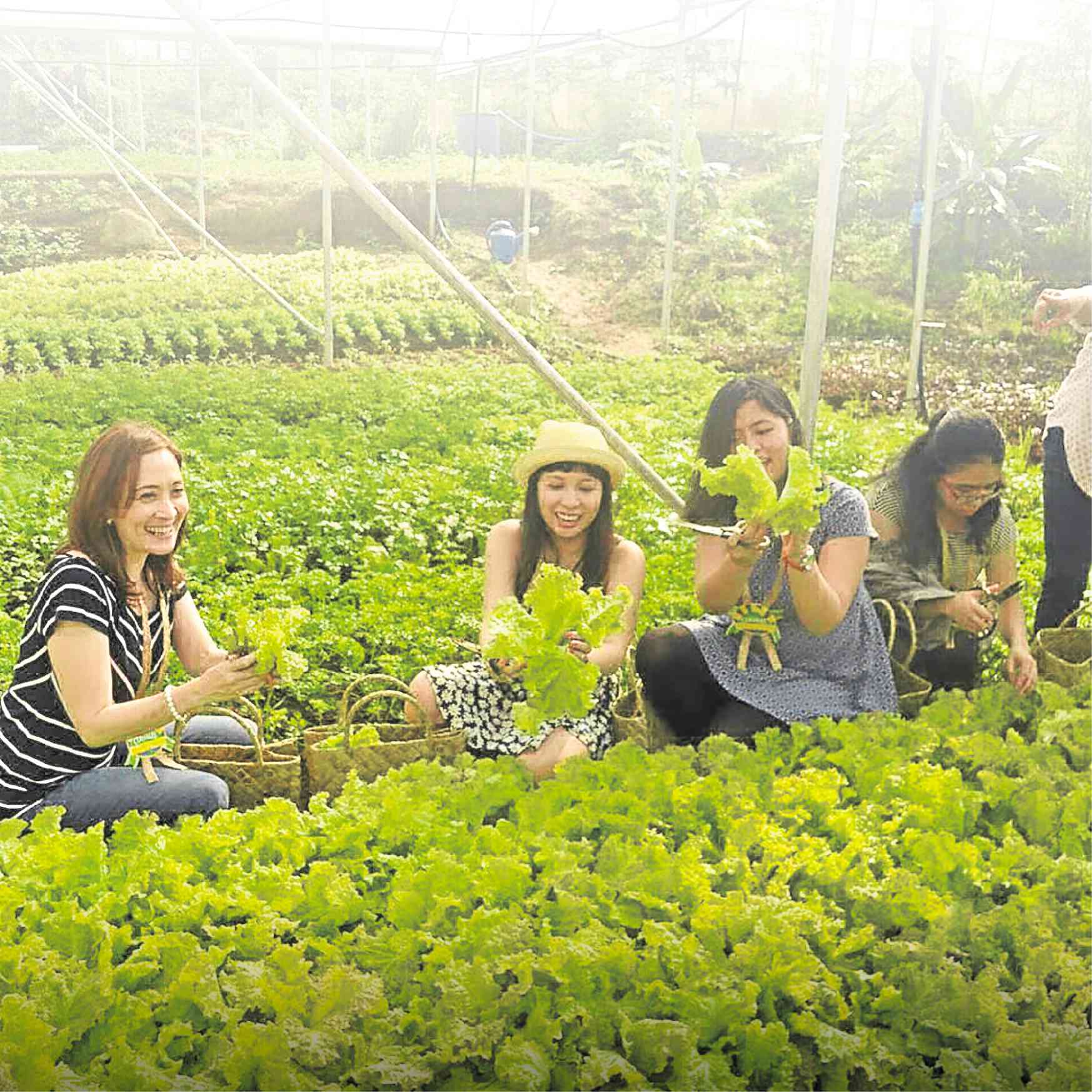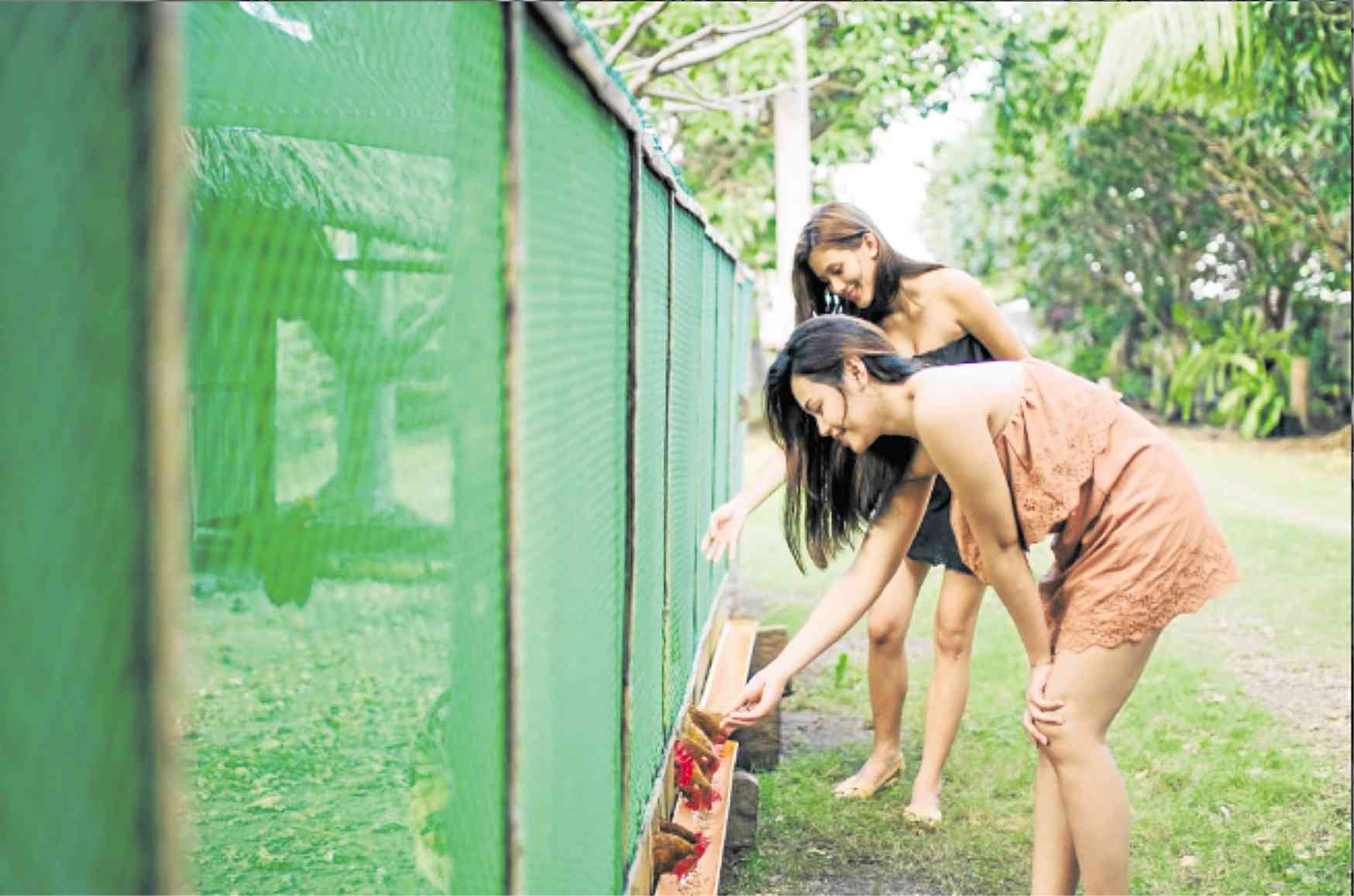Farm tourism growing in PH

Costales Nature Farms in Majayjay, Laguna, is one of the first farm tourism sites accredited by the Department of Tourism. —CONTRIBUTED PHOTOS
Even as the world goes further high-tech through what pundits are calling the Fourth Industrial Revolution, agriculture and farms are regaining importance due to deepened awareness of healthy living and an increased desire for alternative experiences.
There is an increasing push to “go back to basics” and to avoid contributing to the deterioration of the planet by way of activities that increase the emission of greenhouse gases.
One resulting trend is that people—especially those who want to travel—are giving agriculture a second look and are reestablishing their connection with nature.
This, in turn, is giving rise to “farm tourism.”
Travellers seek learning and recreation in farms, and this demand engenders increased economic activities not only in the farms themselves, but also in the surrounding rural communities.
That is why Tourism Secretary Bernadette Romulo-Puyat describes farm tourism as “a catalyst for sustainable tourism and inclusive development.”
To enable this, the farm tourism development law was enacted in May 2016. Finally, after more than two years, the rules to implement the law were promulgated in July.
“Farm tourism holds the promise of food sufficiency and additional income for our tourism stakeholders, including farmers, farmworkers and fisherfolk,” Puyat says in a statement.
“After all, gainful employment, enhanced productivity and sustainable livelihoods are what tourism is really all about,” she adds.
Republic Act No. 10816 recognizes the importance of agriculture in making available food and other products that not only are necessary to sustain and enhance human life but also provide livelihood to a major portion of the population.
Citing data from the World Bank, Puyat says about two-fifths of the Philippines’ total land area of 300,000 square kilometers is devoted to farming, which engages about one-fourth of the country’s workforce.
She says that this, coupled with the world-renowned Filipino hospitality, provides competitive advantages that farm tourism in the Philippines can leverage.
So far, the Department of Tourism (DOT) has accredited 174 farm tourism sites all over the archipelago.
She says the number will surely increase as the government’s farm tourism strategic action plan is expected to be completed within the next three months.
Through RA 10816, the government’s goal is to identify or help establish at least one farm tourism camp—both agricultural as well as fisheries-related—for each of the 81 provinces in the Philippines.
Currently, 31, or about one-fifth of all the accredited farm tourism sites, are concentrated in Calabarzon and more than half are spread out in the Visayas and Mindanao.

Offerings at Vita Isola Leisure Farm in Bohol include an organic farm tour, an encounter with farm animals and an aquaculture tour.
The DOT, along with the Department of Agriculture and Department of Trade and Industry, is tasked to further encourage the establishment of farm tourism sites, and to promote those already identified.
These three agencies, along with private sector representatives, will constitute a farm tourism development board as the law mandates.
To be highlighted is the inclusiveness of benefits from farm tourism. For tourists, there will be more options for destinations, especially in the segment of educational tours.
For rural communities, there will be greater opportunities in jobs such as those for tour guides, drivers and hotel and restaurant workers.
For farmers and farmworkers, there will be additional sources of revenue aside from their harvest.
For the country as a whole, food security is bolstered, thanks to these additional incentives for farmers and fishers to continue their activities instead of switching to other jobs.
There are two types of farm tourism sites.
One is a “day farm,” which is located near highways and main business areas and, thus, ideal four day tours and visits.
The other is a “farm resort” that offers accommodation and dining services.
Guests can take part in activities in the farm or enjoy interactive attractions as part of an immersive experience offering—for example, they can collect eggs, harvest vegetables or catch fish for their own meals.
Considering this, a farm resort is required to have facilities for sleeping as well as a restaurant. But for all farm tourism sites, each should have been operating for at least three months and the location must be “generally safe and peaceful.”
They all must have a reception or information desk, parking areas, dining or multipurpose areas, a farm guide and a souvenir shop or mini trading area.
In terms of infrastructure, the farm tourism site must be accessible by road and have amenities such as electricity, water and communication services.
A farm tourism site must have at all times security personnel on duty, firefighting facilities and well-stocked first aid kits. Safety signages must be conspicuously displayed, and “off limit” areas must be clearly demarcated.
For sanitation, the sites must have clean and well-maintained restrooms as well as areas “with ample amenities.” The sites must be equipped with garbage cans and have waste management systems in place.
The DOT cites three establishments as showcase examples of accredited farm tourism sites.
One is the Nature Wellness Village in Tagaytay City, whose main offering is spa or pampering services but maintains an on-site organic garden that supplies some of the food it serves.
Another is the Oceanview Farm and Cottages in Siquijor, a regular venue for lectures and seminars on organic agriculture.
A third example is the Vita Isola Leisure Farm in Bohol, which offers a tour of its organic farm, encounter with farm animals that include chickens, quails, turkeys, goats and even rabbits.














